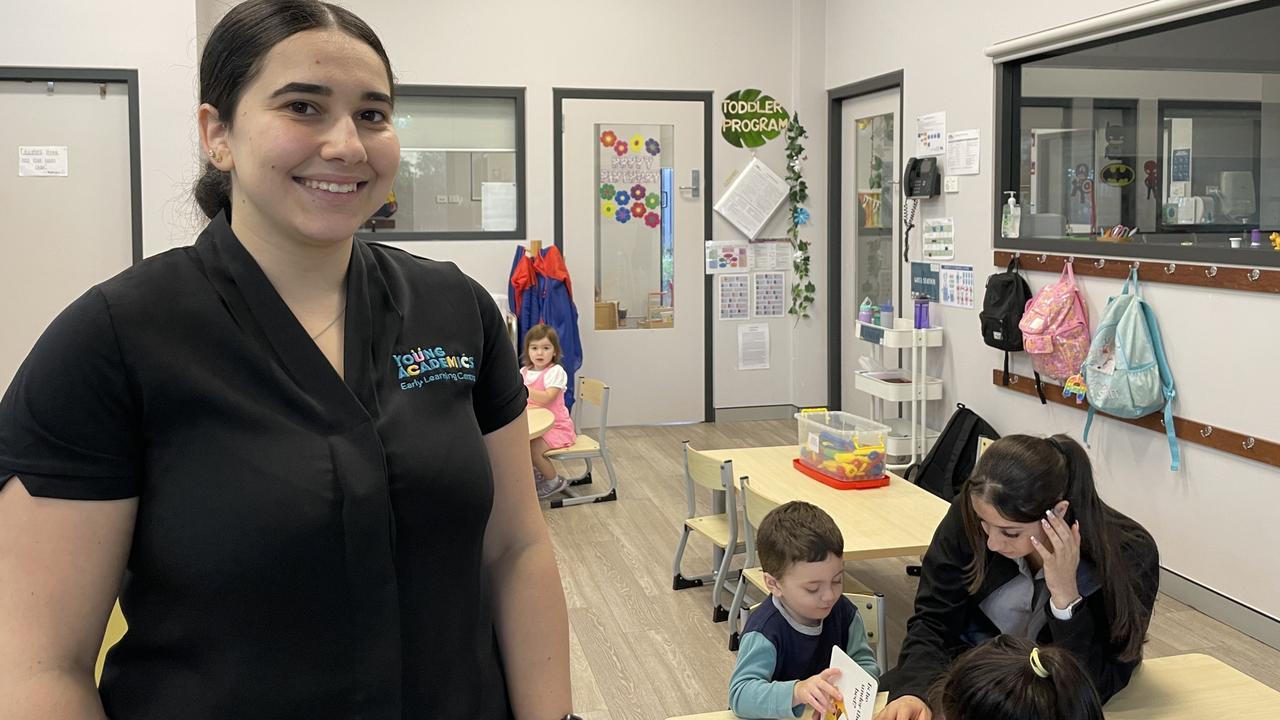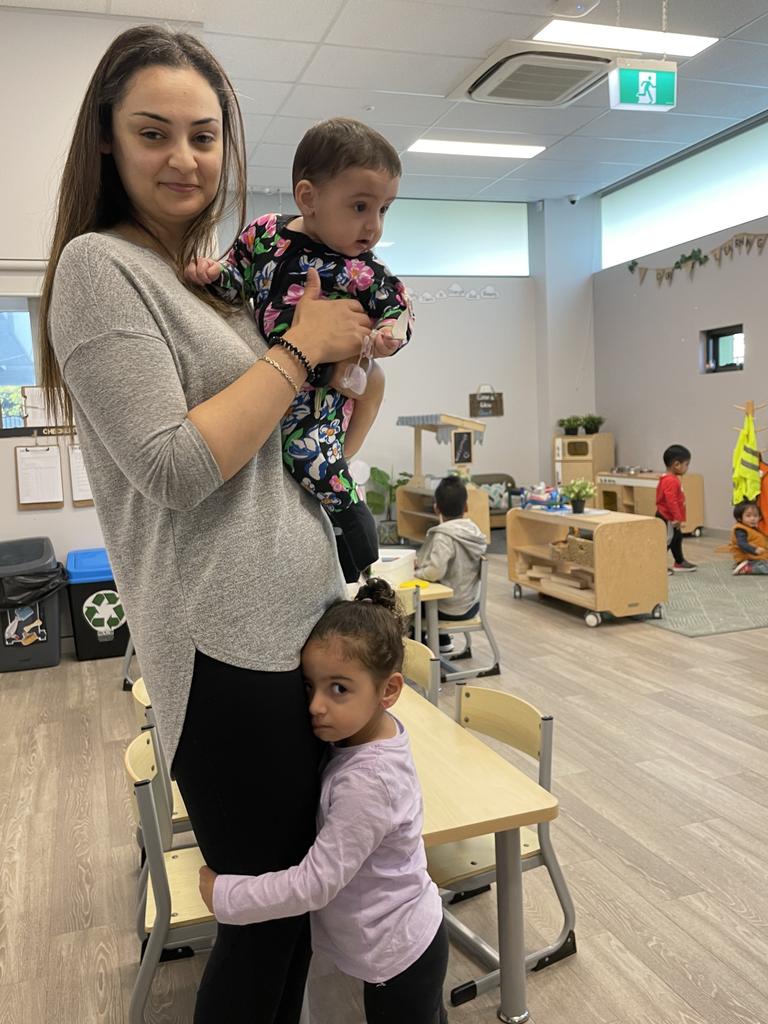More childcare centres needed in Auburn, Guildford, Merrylands
Research has revealed the ‘childcare deserts’ of Australia, where the demand is outweighing the supply of facilities for children in Cumberland and Parramatta.
NSW
Don't miss out on the headlines from NSW. Followed categories will be added to My News.
Research has shown that Auburn, Guildford and Merrylands are part of Australia’s childcare “deserts” with not enough facilities to meet the demand, which is expected to soar now more parents are returning to work after Covid restrictions have lifted.
The Mitchell Institute report revealed that some three million people in NSW are living in what qualifies as the deserts, which are places where there are more than three children for every childcare place available.
In Auburn, data reveals there are 3.26 children in the suburb for every one childcare place. Data reveals 64.80 per cent of the suburb is considered a childcare desert.
Next was Guildford with 3.09 children in the suburb for every one childcare place and 56 per cent of the area classed as a desert.
At the lower end of the scale was Carlingford where there were 2.82 children for every spot (47 per cent) and Parramatta, where there were 2.66 children to each available place (23.50 per cent).
The geographical divide is stark, with suburbs in the inner city having a range of childcare options, while parents in the southwest and western suburbs, along with regional NSW, have to compete for very few places.
The report’s lead author, Dr Peter Hurley, argues that the privatised childcare sector is not opening centres where the demand is highest, but where the owners can charge the highest fees.
“Our research shows that the most expensive childcare in Australian cities are also in suburbs with more childcare places, suggesting there is an incentive for providers to open in wealthier areas where families can afford to pay higher fees,” Dr Hurley said.
Guildford’s Young Academics childcare centre director Natalie Bainou has a capacity of 40 children and 45 on the waiting list.
Miss Bainou said her small but popular childcare centre’s waiting list sometimes reached 100 and said demand was growing.

“I would describe that it is a pretty high demand, especially now parents need to go back to work because restrictions are gone and a lot of families are looking for care,’’ she said.
She said the demand in Guildford could come down to discerning parents choosing a high standard centre.
“There are centres around but centres that are good quality and make families comfortable, that’s another story,’’ she said.
“I think there are quite a bit although I don't think they are as good quality as they need to be.’’
In 2019, the State of Education and Care in Cumberland report backed up this concern when it revealed that the National Quality Standard for Education and Care Services showed Cumberland childcare services were, on average, low quality.
Only 20 per cent of long day care centres in the local government area exceeded the standard, which was lower than the national proportion of 32 per cent.
However, council-run facilities exceeded, or met, national standards.
Guildford father-of-three Dennis Kumar agreed there were not a lot of reputable childcare centres locally but was happy with sending his son Elijah to Young Academics and will most likely send his fourth child, due in November, to childcare too.
“It’s very important because I believe you have to have work-life balance as well,’’ the asset finance worker said.
“It’s a bit hard to rely on family members when everyone’s working these days.’’
Merrylands mum of two and personal assistant Nora Safadi also sent her eldest daughter Lujayne to Young Academics because of its good reputation.
After inspecting other facilities she was worried the teachers were not experienced and “probably didn’t know how to deal with children’’.


The State of Education and Care in Cumberland report showed the demand for child care would soar across the community, with the population of children aged five and under forecast to increase to 28,337 by 2036 (equating to an extra 7031 children).
The data was consistent with the Mitchell Report — showing growth would be highest in Merrylands-Holroyd (1784 children), followed by Auburn North (1088 children), Auburn South (879 children); and Lidcombe (795).
The lack of childcare centres in Auburn could be pointed to more stay-at-home mums. Auburn North had 59 per cent of mothers who were not in the workforce compared with Pemulwuy where only 37 per cent of mothers were not in the labour force.
However, Cumberland Mayor Lisa Lake said more parents would send their children to childcare centres if the facilities held high standards.
“I think originally it was said the (Auburn) area had a lower proportion of women working so there wasn’t demand,’’ she said.
“I think that’s a bit simplistic. I think if you’ve got quality childcare women will feel confident to leave their children and work because we’re all looking for sources of income.’’
The need for childcare in the Cumberland community was underlined in 2020 when outraged parents spoke out against the council’s plan to privatise its 17 childcare centres in an effort to salvage $4.5 million in savings.
In August 2020, the cash-strapped council revealed it was considering selling its childcare centres, four swimming pools, two golf courses, aged care units and the Holroyd Centre.
The council, under former Mayor Steve Christou, reversed its decision to close childcare centres a year later following public backlash that underlined the demand for the facilities, which cater for more than 600 families.
How they calculated it
The childcare deserts report uses data from Australian Children’s Education and Care Quality Authority (ACECQA), which rates the more than 8700 childcare centres that operate nationally.
The report’s authors decided on using data for childcare places for 0-4 year olds, only
including centres open more than 40 hours a week and excluding children who attend
preschool.
From the ACECQA data, that equated to 602,000 places nationally for 1.52 million children.
This results in a ratio of about 0.396 childcare places per child, if childcare was equally
divided across the country.
The authors classify childcare deserts as places where there are more than three children for
every childcare place available. That also equals a score of 0.33 or lower.
By comparison, an oasis is a place that scores 0.6 or higher, meaning there are 0.6 places
for every child in the area, significantly above the national average.
The authors explain that the score of 0.6 equals out to three full days of childcare available
for every child, every week, meeting the bar of “universal access”.
To calculate how many childcare options an individual ABS-defined statistical region had,
travel times were used as a metric instead of distance, LGA, or suburb, to more fairly
consider how people move in regional areas, Dr Hurley said.
For example, two opposite ends of a peninsula might be within 10km, but an hour drive
away.
To calculate the score of each region, the team used a baseline of a 10 minute drive for
metropolitan Sydney, and a 20 minute drive for regional areas, then weighted the numbers
higher or lower depending on whether the childcare options were within the travel time.
So a region with multiple options that were 2.5 minutes away would score higher than a
region with the same options that were 10 minutes or more away.
That also allows for a fairer comparison between two households in opposite ends of the
same small regional town, and equalises the difference in convenience.
Because the authors have chosen to weigh the childcare places available against travel
times, the scores are not straightforward comparisons of availability, they also take into
account convenience, which the authors believe is a huge factor in parent’s childcare
choices.
It more fairly weighs up the issue of accessibility, according to Dr Hurley.
MORE NEWS
More Coverage
Work starts on Alfred Street Bridge, Parramatta
Auburn: Work begins on Mirvac business park at Manchester Rd
Originally published as More childcare centres needed in Auburn, Guildford, Merrylands








